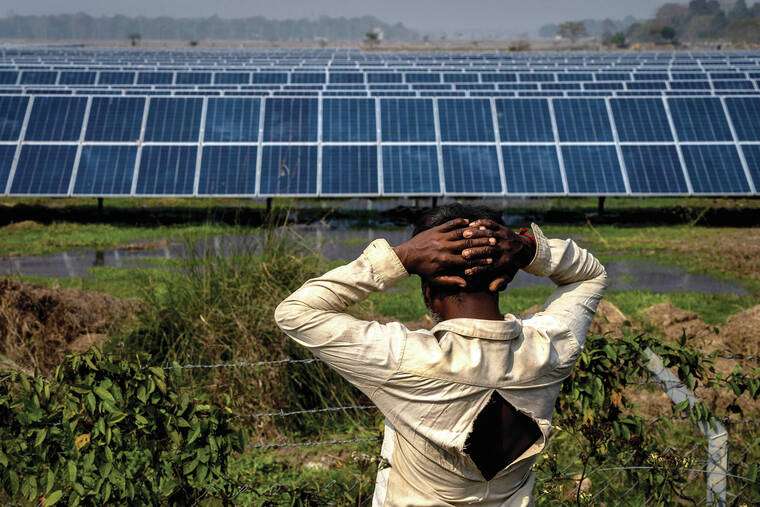Most major nations lag in acting on climate-fighting goals
WASHINGTON — For most of the major carbon-polluting nations, promising to fight climate change is a lot easier than actually doing it. In the United States, President Joe Biden has learned that the hard way.
Among the 10 biggest carbon emitters, only the European Union has enacted polices close to or consistent with international goals of limiting warming to just a few more tenths of a degrees, according to scientists and experts who track climate action in countries.
ADVERTISING
But Europe, which is broiling through a record-smashing heat wave and hosting climate talks this week, also faces a short-term winter energy crunch, which could cause the continent to backtrack a tad and push other nations into longer, dirtier energy deals, experts said.
“Even if Europe meets all of its climate goals and the rest of us don’t, we all lose,” said Kate Larsen, head of international energy and climate for the research firm Rhodium Group. Emissions of heat-trapping gases don’t stop at national borders, nor does the extreme weather that’s being felt throughout the Northern Hemisphere.
“It’s a grim outlook. There’s no getting away from it, I’m afraid,” said climate scientist Bill Hare, CEO of Climate Analytics. His group joined with the New Climate Institute to create the Climate Action Tracker, which analyzes nations’ climate targets and policies compared to the goals of the 2015 Paris Agreement.
The tracker describes as “insufficient” the policies and actions of the world’s top two carbon polluters, China and the U.S., as well as Japan, Saudi Arabia and Indonesia. It calls Russia and South Korea’s polices “highly insufficient,” and Iran comes in as “critically insufficient.” Hare says No. 3 emitter India “remains an enigma.”
“We are losing ground against ambitious goals” such as keeping global warming to less than 2 degrees Celsius (3.6 degrees Fahrenheit) or 1.5 Celsius (2.7 degrees Fahrenheit) since pre-industrial times, said veteran international climate negotiator Nigel Purvis of Climate Advisers. The world has already warmed 1.1 degrees (2 degrees Fahrenheit) since pre-industrial times.
Seven years ago, when almost all the nations of the world were preparing for what would become the Paris climate agreement, “it was all about ambition and setting ambitious targets,” Larsen said. “Now we are transitioning into a new phase that’s really about implementation … I don’t think the international community knows how to do implementation.”
Other nations and the United Nations can pressure countries to set goals, but enacting laws and rules is a tougher sell. While Europe has been successful with “a long history of implementing and ratcheting up existing policies,” Larsen said, that’s not the case in the United States.
The U.S. is on path to cut emissions by 24% to 35% below 2005 levels by 2030, far shy of the nation’s pledge to reduce emissions by 50% to 52% in that time, according to a new analysis by Rhodium Group.
Biden is running low on options, said Larsen, a report co-author. Congress — specifically key Sen. Joe Manchin of West Virginia — is balking on the president’s climate-fighting legislation, and the Supreme Court curbed power plant regulations.


